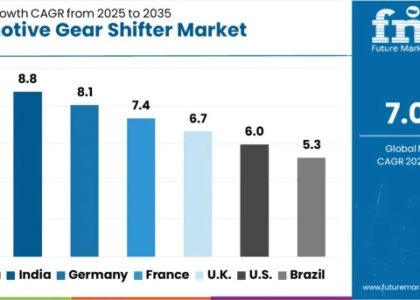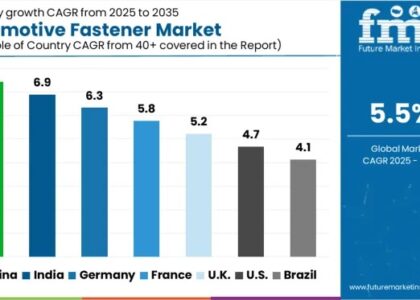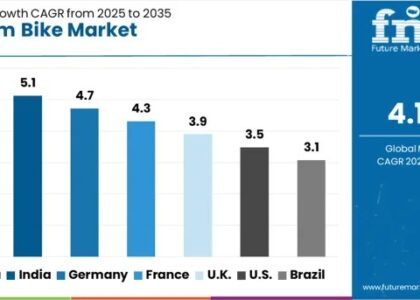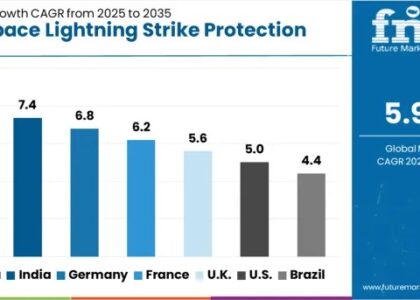The corrugated fiberboard market is set for significant expansion between 2023 and 2033, with a forecasted average Compound Annual Growth Rate (CAGR) of 5.9%. In 2023, the market is expected to commence at a valuation of US$ 105.9 billion, and by the year 2033, it is projected to claim a substantial market share of US$ 187.9 billion. This growth trajectory signifies a robust market demand for corrugated fiberboard products and their diverse applications in various industries worldwide.
Corrugated Fiberboard Market refers to the industry dedicated to producing corrugated fiberboard, a versatile material widely used in packaging. It comprises multiple layers of paperboard sandwiched together, with a wavy inner layer that provides exceptional strength and durability. This unique structure makes it ideal for a wide range of applications, from shipping boxes to point-of-purchase displays.
In 2021, there was a notable surge in the demand for combination flutes corrugated fiberboard, creating a substantial absolute opportunity amounting to US$ 24.4 billion, as reported by FMI. Furthermore, in 2022, the corrugated fiberboard market witnessed the top five key players collectively holding a market share that ranged between 10% and 15%. These statistics underscore the growing market demand for corrugated fiberboard products, particularly those utilizing combination flutes, as well as the competitive landscape within the industry.
Corrugated fiberboard is non-toxic and 100% reusable. It is lightweight and has excellent shock-absorbing capacity. The corrugated fiberboard sheet is made up of paper. Due to such benefits, fiberboard carton packaging is estimated to gain traction in the global market.
Request Sample Copy of the Report: https://www.futuremarketinsights.com/reports/sample/rep-gb-11345
Drivers:
- E-commerce Boom: The growth of e-commerce and online shopping has significantly increased the demand for corrugated fiberboard packaging for shipping and protection of goods.
- Sustainability: Corrugated fiberboard is considered an environmentally friendly packaging material, and the global emphasis on sustainability is driving its use in various applications.
- Economic Growth: A rise in economic activity, industrialization, and trade leads to increased demand for corrugated fiberboard in packaging and logistics.
- Customization and Design: Advances in printing and design technologies allow for attractive and customized corrugated packaging solutions, boosting market growth.
- Consumer Preferences: Consumers favor packaging that is easy to recycle and dispose of, which aligns with corrugated fiberboard’s eco-friendly nature.
- Regulatory Compliance: Stringent regulations regarding packaging materials, especially in the food and pharmaceutical industries, drive the adoption of safe and compliant corrugated fiberboard solutions.
Restraints:
- Raw Material Costs: Fluctuations in the costs of raw materials, such as paper and adhesives, can affect the production and pricing of corrugated fiberboard.
- Competition: The corrugated fiberboard market is highly competitive, with numerous manufacturers and suppliers, making it challenging for new entrants to gain market share.
- Technological Challenges: Developing advanced corrugated fiberboard materials with enhanced durability and features can be technically complex and costly.
- Market Fragmentation: Regional variations in corrugated packaging preferences, standards, and regulations can create challenges for global expansion and standardization.
- Supply Chain Disruptions: Disruptions in the supply chain, such as those caused by the COVID-19 pandemic, can impact the availability of raw materials and affect production and delivery timelines.
- Sustainability Concerns: While corrugated fiberboard is eco-friendly, concerns about its recyclability, especially in mixed-material packaging, may pose challenges.
Request Report Methodology: https://www.futuremarketinsights.com/request-report-methodology/rep-gb-11345
Competitive Landscape
The global corrugated fiberboard market is highly fragmented and competitive with the presence of several local and regional companies. Moreover, key players are focusing on mergers & acquisitions, expansions, collaborations, and partnerships to strengthen their positions in the market. They are also developing new corrugated fiberboards to attract a large consumer base.
Recent Developments:
- In November 2021, Boix Machinery India participated in India Corr Expo to showcase its new products. Further, the company has expanded its production capacity and enhanced the stacking strength of its specialized corrugated boxes for fruit exports to lower the rejection of fruits due to bruising amid shipping.
2. In May 2021, Mondi confirmed that it has completed the acquisition of Olmuksan. This acquisition is going to help Mondi to strengthen its position in the fast-growing corrugated market of Türkiye, as Olmuksan has a diverse customer base and was a key player in the Turkey corrugated packaging industry.
Key Market Players:
- Georgia-Pacific
- W.E. Roberts
- Stora Enso
- Nuttall Packaging
- Oji Holdings Corporation
- Corrugated Packaging Alliance
- Fencor Packaging Group Limited
- Durham Box
- ABBE CORRUGATED
- Board24
- Smurfit Kappa
- Mondi
- Jaineeket Enterprises
- Shanghai Lehui Packaging and Printing Co., Ltd.
Segmentation:
By Flute Type:
- Flute A
- Flute B
- Flute C
- Combination Flutes
- Micro Flutes
By Board Type:
- Single Wall
- Double Wall
- Triple Wall
By End Use:
- Food & Beverages
- E-commerce
- Pharmaceuticals
- Cosmetics & Personal Care
- Electrical & Electronics
- Automotive
- Transportation & Logistics
- Textile
By Regions Covered:
- North America
- The United States
- Canada
- Latin America
- Brazil
- Mexico
- Rest of Latin America
- Europe
- Germany
- The United Kingdom
- France
- Spain
- Russia
- Rest of Europe
- Japan
- Asia Pacific Excluding Japan
- China
- India
- Malaysia
- Singapore
- Australia
- Rest of Asia Pacific Excluding Japan (APEJ)
- Middle East and Africa
- GCC Countries
- Israel
- South Africa
- The Middle East and Africa (MEA)
For any Queries Linked with the Report, Ask an Analyst: https://www.futuremarketinsights.com/ask-the-analyst/rep-gb-11345
About Future Market Insights (FMI)
Future Market Insights, Inc. (ESOMAR certified, recipient of the Stevie Award, and a member of the Greater New York Chamber of Commerce) offers profound insights into the driving factors that are boosting demand in the market. FMI stands as the leading global provider of market intelligence, advisory services, consulting, and events for the Packaging, Food and Beverage, Consumer Technology, Healthcare, Industrial, and Chemicals markets. With a vast team of over 5000 analysts worldwide, FMI provides global, regional, and local expertise on diverse domains and industry trends across more than 110 countries.
Contact Us:
Future Market Insights Inc.
Christiana Corporate, 200 Continental Drive,
Suite 401, Newark, Delaware – 19713, USA
T: +1-845-579-5705
For Sales Enquiries: sales@futuremarketinsights.com
Website: https://www.futuremarketinsights.com
LinkedIn| Twitter| Blogs | YouTube





